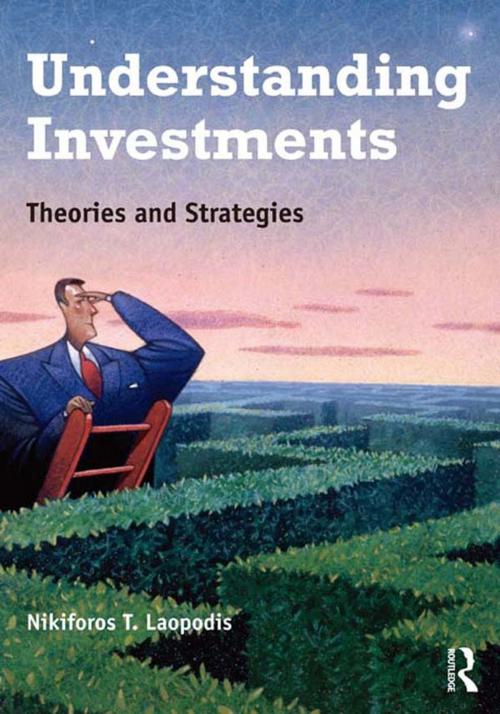Understanding Investments
Theories and Strategies
Business & Finance, Finance & Investing, Finance, Investments & Securities| Author: | NIkiforos Laopodis | ISBN: | 9781136255137 |
| Publisher: | Taylor and Francis | Publication: | November 12, 2012 |
| Imprint: | Routledge | Language: | English |
| Author: | NIkiforos Laopodis |
| ISBN: | 9781136255137 |
| Publisher: | Taylor and Francis |
| Publication: | November 12, 2012 |
| Imprint: | Routledge |
| Language: | English |
The author's main goal in writing Understanding Investments is to present the classic theories and strategies in the field of finance in a new, intuitive, and practical way. This text offers context and grounding information to students truly looking, as the title indicates, to understand investments.
This textbook brings a number of innovative features to the field:
-
Presentation of material from the economics point of view, stressing the interpretation of concepts, rather than their mere memorization and mechanical application.
-
Shorter, more streamlined chapters, so instructors and students won't be distracted by superfluous detail, and can instead focus on the most relevant issues.
-
Fewer chapters than in current textbooks, so instructors can comfortably cover all material within a semester.
-
Boxes with ‘International Focus’ vignettes, discussions ‘Applying Economic Analysis’ to relevant topics, and featured ‘Lessons from our Times’, allowing students to gain a deeper understanding of the material and its relevant context and applications.
-
Sections in each chapter discussing different investment strategies and their pros and cons.
-
Questions that solicit students' critical thinking skills and problems that require their quantitative expertise to address real-life problems - rather than rote, mechanical questions that merely require regurgitation.
The author's main goal in writing Understanding Investments is to present the classic theories and strategies in the field of finance in a new, intuitive, and practical way. This text offers context and grounding information to students truly looking, as the title indicates, to understand investments.
This textbook brings a number of innovative features to the field:
-
Presentation of material from the economics point of view, stressing the interpretation of concepts, rather than their mere memorization and mechanical application.
-
Shorter, more streamlined chapters, so instructors and students won't be distracted by superfluous detail, and can instead focus on the most relevant issues.
-
Fewer chapters than in current textbooks, so instructors can comfortably cover all material within a semester.
-
Boxes with ‘International Focus’ vignettes, discussions ‘Applying Economic Analysis’ to relevant topics, and featured ‘Lessons from our Times’, allowing students to gain a deeper understanding of the material and its relevant context and applications.
-
Sections in each chapter discussing different investment strategies and their pros and cons.
-
Questions that solicit students' critical thinking skills and problems that require their quantitative expertise to address real-life problems - rather than rote, mechanical questions that merely require regurgitation.















